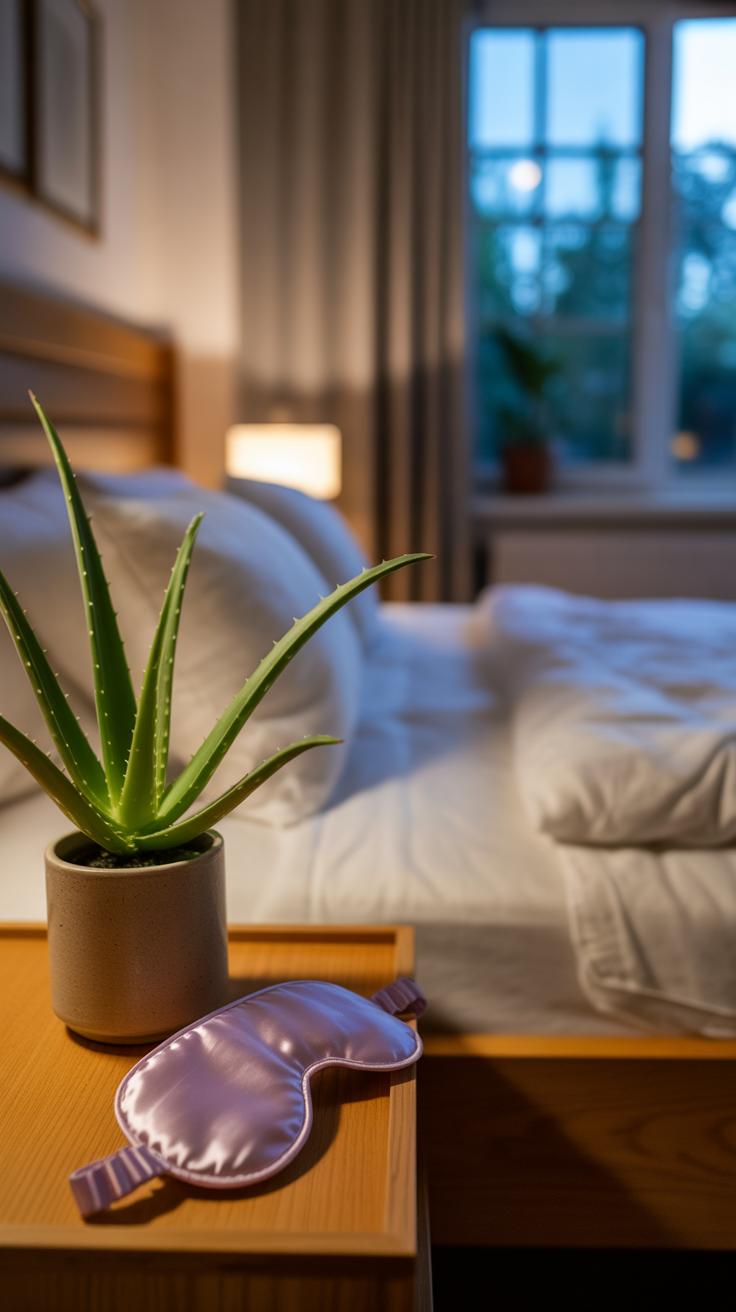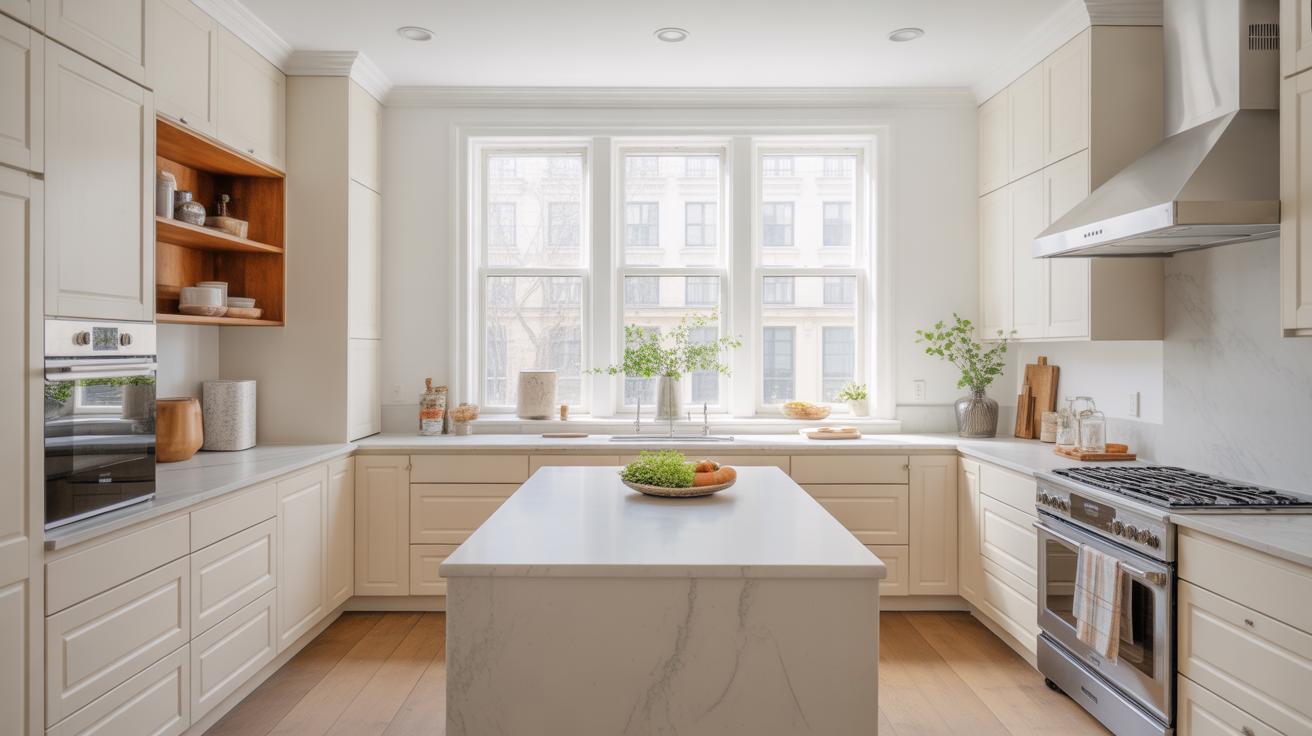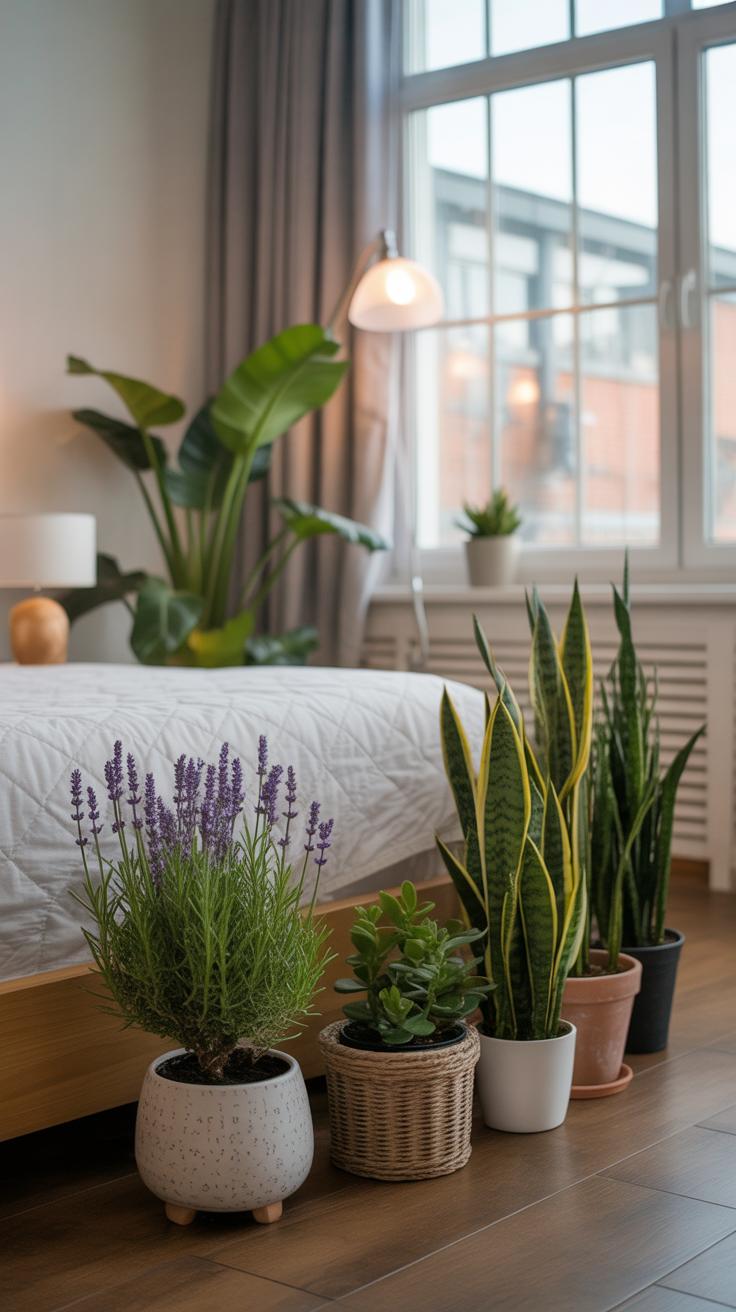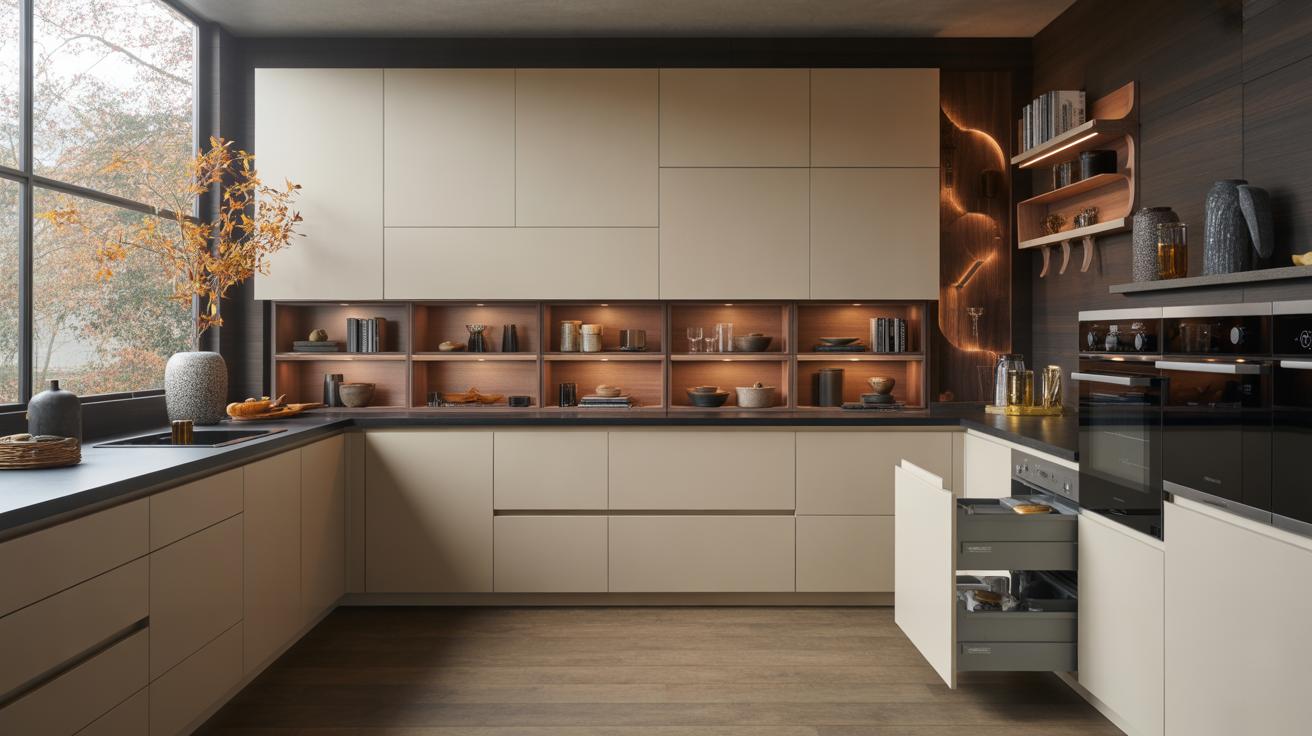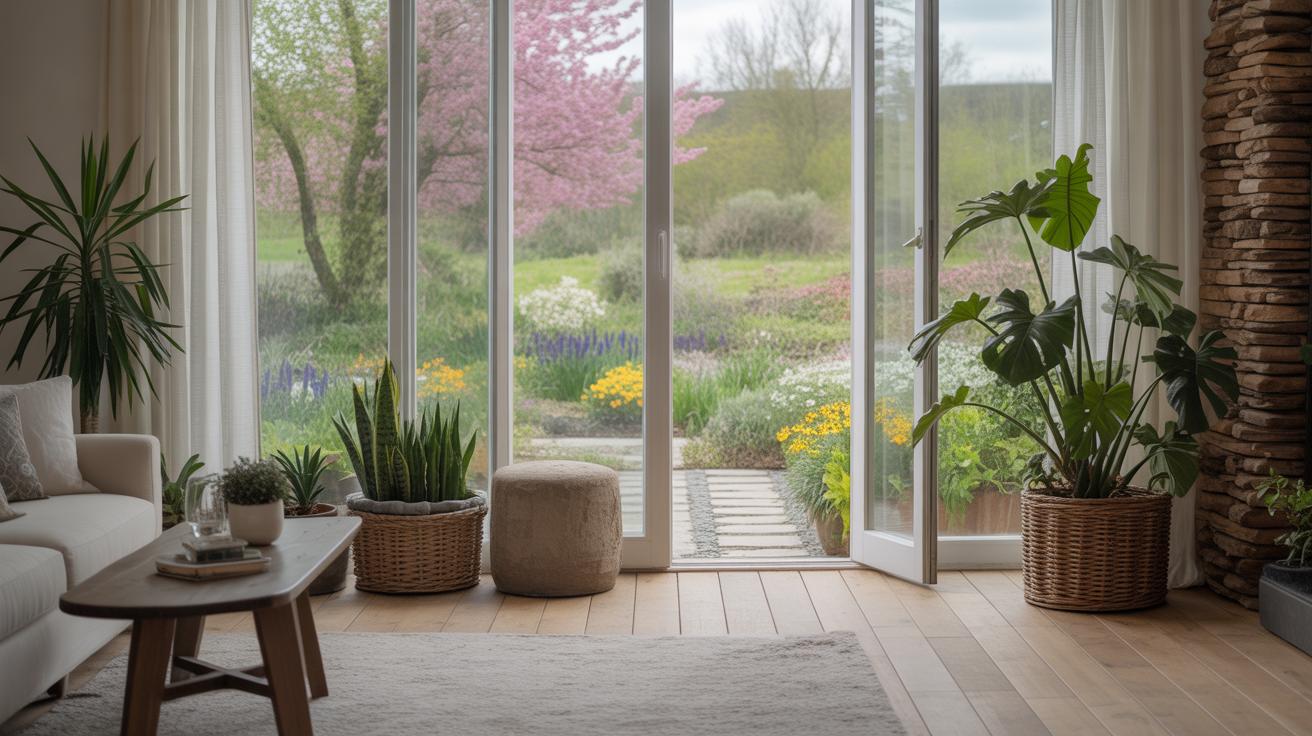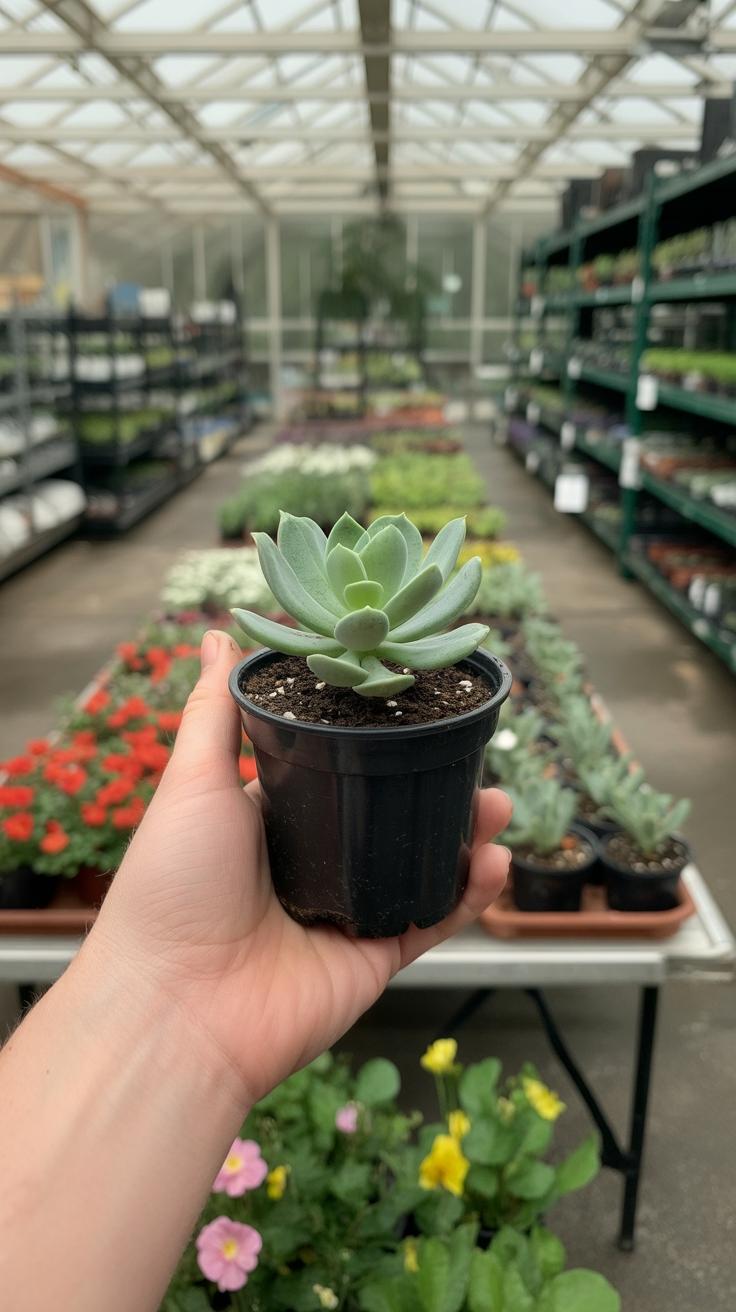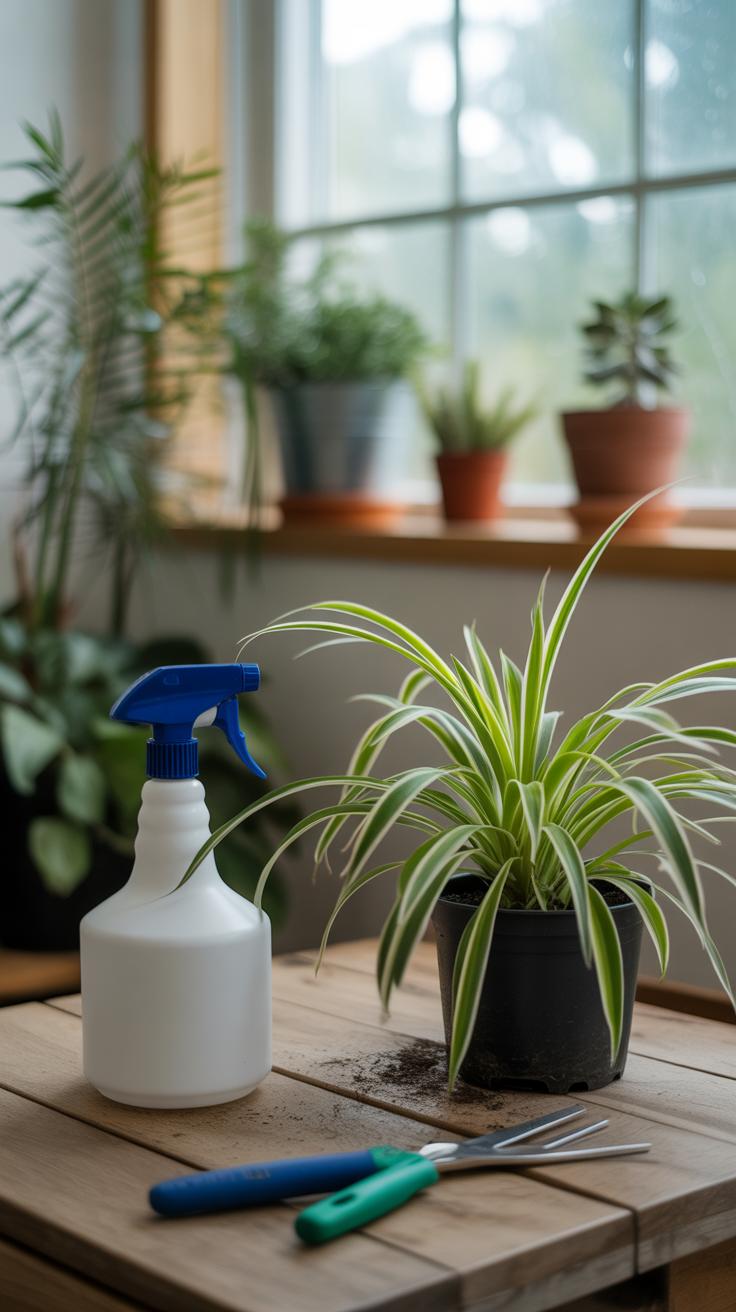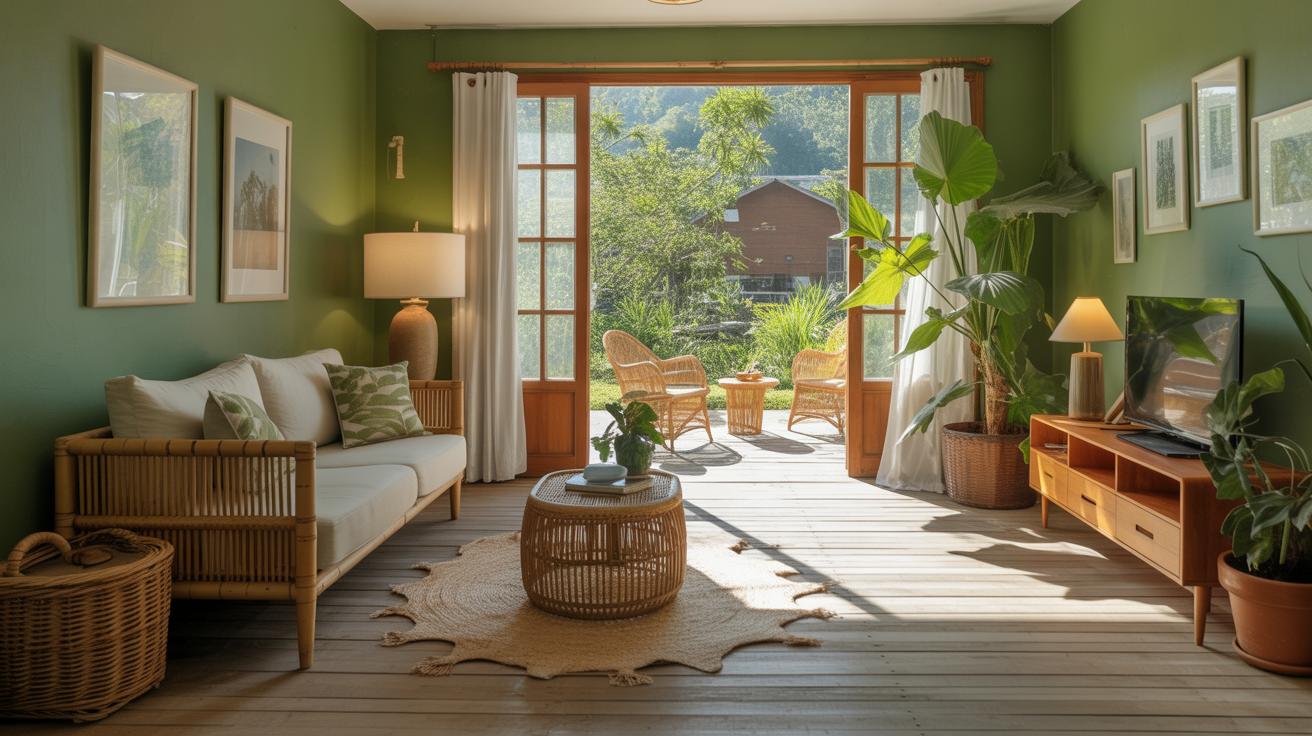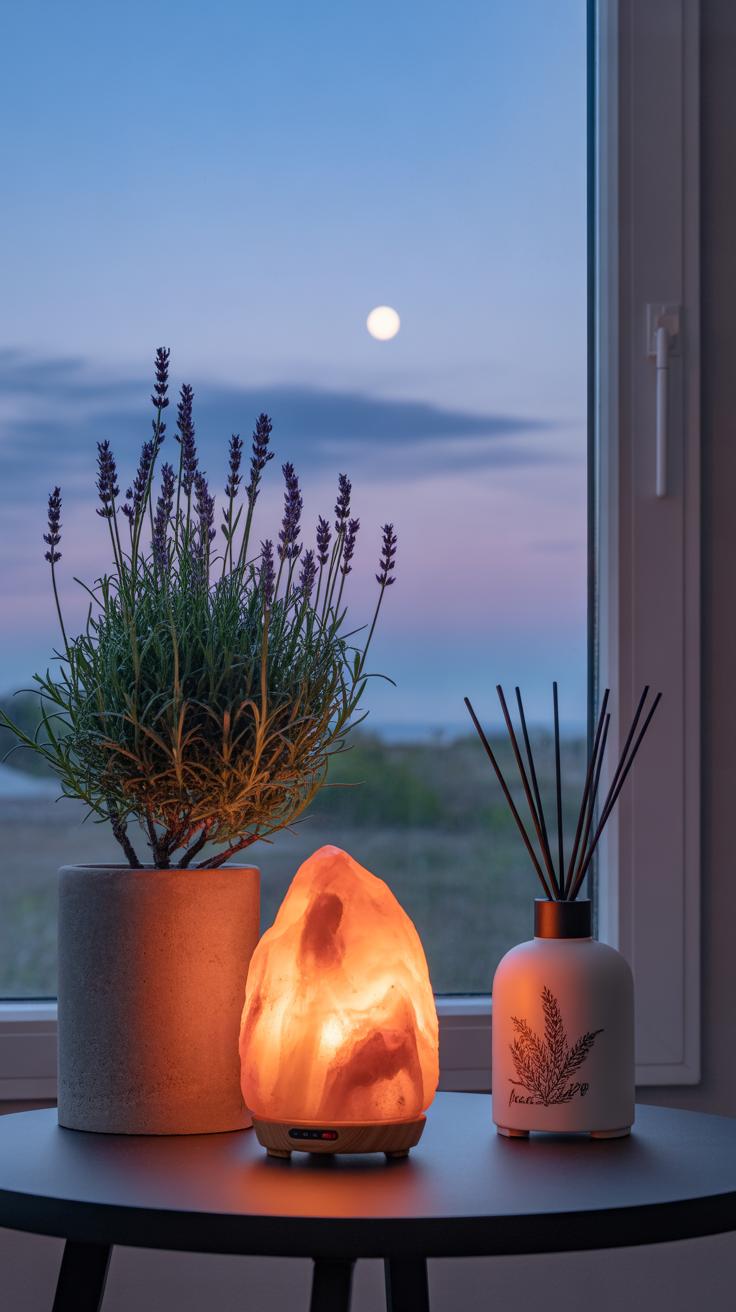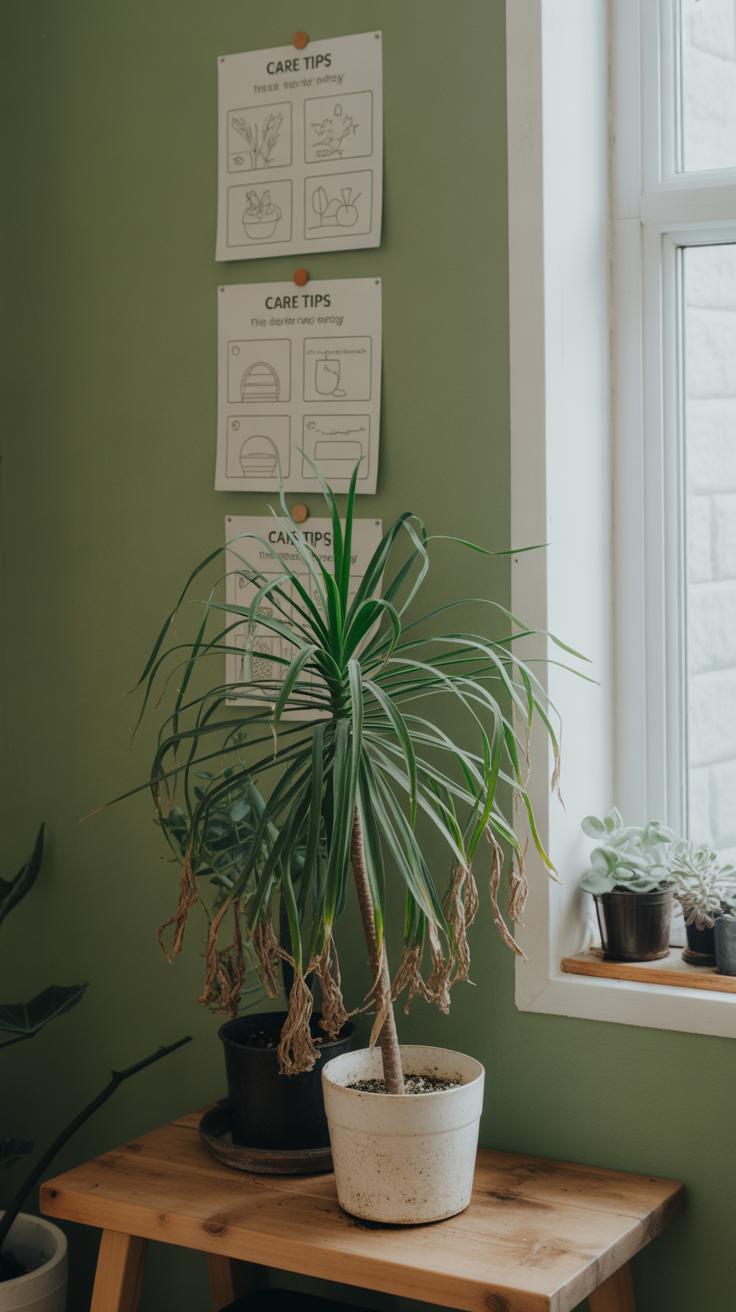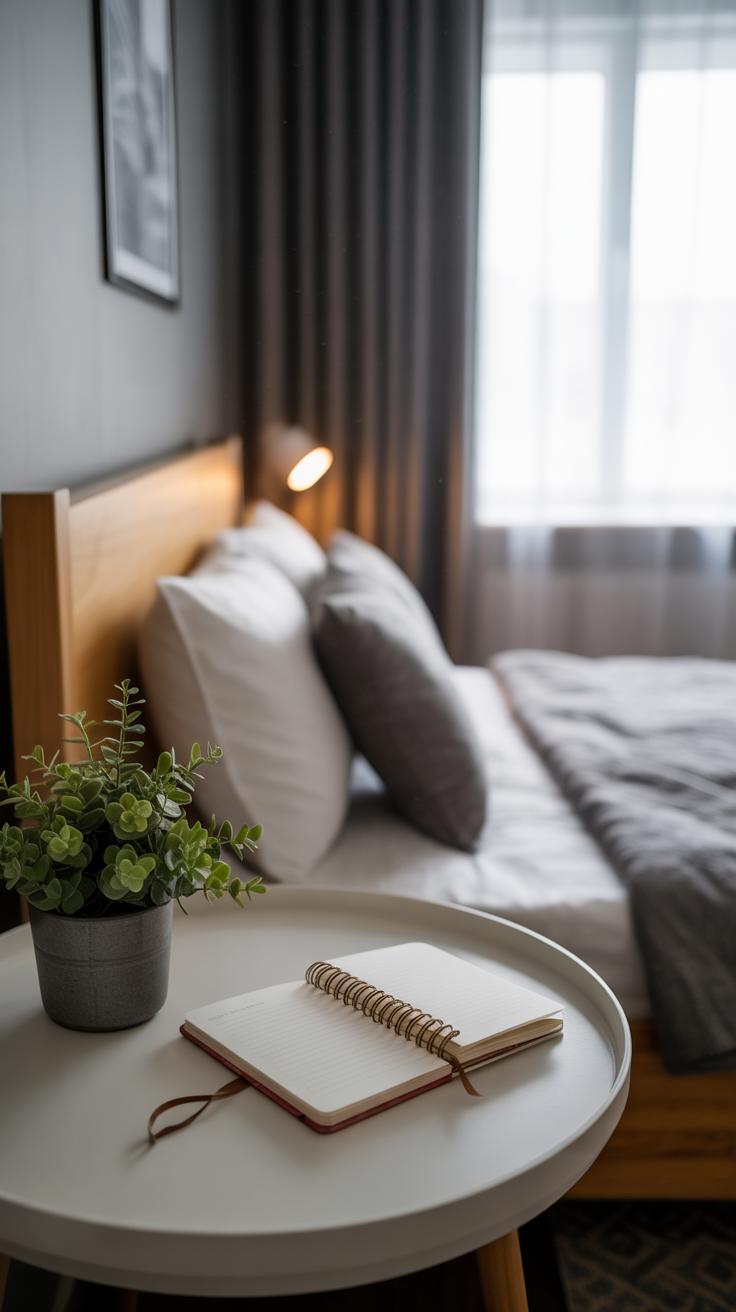Introduction
Bringing nature into your bedroom can change how you sleep. Some plants help clean the air and make you feel relaxed. This can help you fall asleep faster and sleep better all night long.
In this article, we will explore top bedroom plants that improve your sleep environment. We will discuss their benefits, how to care for them, and what makes them good for your room. You will learn why adding these plants to your bedroom is a simple step to better sleep.
How Plants Affect Your Sleep
You might not realize it, but plants actively change the air in your bedroom. They take in carbon dioxide, which we exhale, and release oxygen back into the room. This simple exchange can make a difference in how fresh the air feels, especially overnight when we are breathing slowly and deeply.
But it’s not just about oxygen. Some plants also clean the air by absorbing pollutants. Things like formaldehyde and benzene—common in indoor environments—can be reduced by certain green companions. Cleaner air means your body doesn’t have to work as hard to breathe during sleep, which could help you rest more soundly.
Then there are plants that offer more than just clean air. Some, like lavender and jasmine, emit gentle, natural scents believed to calm the mind. When your stress levels go down, your body can relax more easily. And since stress tends to keep us awake or trigger restless nights, these smells might actually invite sleep to come sooner.
Have you ever noticed how a room with a soft, natural scent feels different? Maybe the science behind it is about molecules that trigger calming signals in your brain. While the connection isn’t fully understood, many people find that these subtle aromas help quiet racing thoughts before bed.
So, could it be that plants not only freshen the air but also create an environment where your brain feels safe to shut down? It’s worth thinking about the quiet role they play in the quality of your rest, even if it’s not something we usually notice directly.
Best Bedroom Plants for Better Sleep
Picking the right plants for your bedroom might seem simple, but some really stand out when it comes to improving your sleep environment. Let’s start with the well-known air-cleaners: the snake plant, aloe vera, and peace lily.
The snake plant is almost like a night-time oxygen machine. It keeps producing oxygen even in the dark, which is unusual for most plants. That can help you breathe a bit easier while you’re sleeping. It’s also tough and doesn’t need much light or water, making it pretty forgiving if you forget to care for it occasionally.
Aloe vera isn’t just great for sunburn—it also quietly purifies your air by removing toxins like formaldehyde. Plus, it’s one of the easiest plants to grow. Just put it near a sunny window, water once in a while, and it often thrives without much fuss. Some people say having aloe vera nearby makes the room feel fresher, though that might be more about perception than hard facts.
Peace lilies do a power clean of indoor air, getting rid of mold spores and common allergens. They flower indoors, adding a gentle beauty, but they do need a little more attention—regular watering and indirect sunlight. If your bedroom tends to get stuffy, a peace lily might loosen that feeling.
On the scent side, lavender, jasmine, and gardenia are popular for helping people wind down.
Lavender’s calming, mildly sweet smell is famous for reducing anxiety and encouraging rest. You might find yourself breathing a little easier just by having it near your bed. Easy to care for in moderate light, it might need occasional pruning to keep it neat but rarely being a hassle.
Jasmine’s scent feels richer and almost intoxicating at night. Some studies suggest the smell improves sleep quality and even mood. Admittedly, jasmine needs a bit more attention since it prefers bright, indirect light and consistent watering—but many say the payoff is worth it.
Gardenia delivers a sweet, creamy scent that’s very soothing, though it’s known for being a bit finicky. It likes humidity and consistent moisture, so maybe not the best choice if you travel a lot. But if you can manage, its fragrance can almost seem like a natural sleep aid.
Then there’s the spider plant. While less talked about, it’s fantastic at reducing airborne pollutants. It requires light watering and indirect sunlight, easy to grow for most people. Its arching leaves add a bit of green flair without demanding much.
And lastly, the English ivy. This one’s interesting because it helps reduce airborne mold—perfect if you’re sensitive to allergens that interrupt sleep. Plus, it can tolerate low light but might need trimming to keep it from becoming a bit wild.
So, looking at these plants, think about what suits your room and how much effort you want to spend. Some like the snake plant keep it almost effortless, while others like gardenia ask for more patience. But, really, any of these could nudge your sleep environment in a better direction.
How to Choose the Right Bedroom Plant
Picking the right plant for your bedroom isn’t just about what looks nice. It really depends on your space, how much light you get, and what kind of care you can give. You might love a lush fern but if your room hardly sees natural light, that fern will probably struggle. So, the first thing to ask is: what type of light does your bedroom get?
Consider Your Bedroom Light
Bedrooms vary a lot in light. Some have bright, direct sunlight most of the day; others get just a few hours of indirect light or sometimes none at all. It helps to know this because plants thrive differently depending on light availability.
- Low Light: Think about plants like snake plants or pothos. These don’t need much sunlight and can survive in darker corners—perfect if your bedroom faces north or has small windows.
- Medium Light: If your room gets filtered or indirect light part of the day, try peace lilies or dracaenas. They tolerate moderate light and still add something green and fresh.
- Bright Light: Rooms with southern exposure or large windows suit succulents or aloe vera, which like strong light but not always direct for long hours.
Sometimes, figuring out your room’s exact light can be tricky. You might think it’s bright, but the sun angle changes by season, messing with your plant’s needs. It’s okay if you guess wrong at first. Observing how your plant fares over a few weeks is part of the process.
Match Plant Care to Your Routine
Another thing people often overlook is matching plant care to their lifestyle. Some plants demand constant attention—watering every couple of days, regular pruning, and humidity checks. Others are more laid back, needing water occasionally and tolerating some neglect.
Ask yourself:
- How much time can you realistically give to a plant? Daily? Weekly?
- Do you travel a lot or have a busy schedule that might make regular watering tough?
- Are you okay with occasional misses when it comes to care?
For instance, if you know you’ll forget to water often, go for tougher options like the snake plant or ZZ plant. They survive dryness better than many others. But if you enjoy tending to plants, maybe a spider plant or lavender fits your pace.
Choosing a plant that fits your actual bedroom environment and your daily habits makes all the difference. It keeps your space comfortable and your plants alive—something I’ve learned the hard way more than once.
How to Care for Bedroom Plants
Keeping bedroom plants alive and well might seem tricky at first, but it’s mostly about observing and adjusting. Plants have their own little rhythms, just like we do, and learning to read them can make a big difference. Watering is one of those areas where I see people often go wrong—either too much or too little, and plants respond in ways that aren’t obvious right away.
Watering Tips for Healthy Plants
Try to avoid a set schedule like “water every three days.” Instead, check the soil first. Stick your finger an inch down—if it feels dry, it’s not a bad idea to water. Different plants have different needs, of course. Succulents like a good dry-out between watering, but ferns prefer consistent moisture. When you do water, pour enough so some drains out below. This helps flush salts out and lets roots breathe. Overwatering causes root rot, but underwatering makes leaves shrivel slowly. So, watch the leaves too—drooping or yellowing can mean water problems.
Light and Placement Advice
Light is a bit of a balancing act. Some plants thrive on bright, indirect sunlight—like snake plants or pothos—and they’re perfect near a window without direct rays. Others need less, like peace lilies, which can tolerate lower light but will need a bit more water to stay happy. If your bedroom’s light shifts with seasons, consider moving plants accordingly. East or south-facing windows often work well in winter, while shady corners might be better in summer when the sun is strong. Don’t be afraid to experiment a little. Sometimes moving a plant a few feet changes its mood completely.
Also, watch for drafts or heat sources; sudden temperature changes can stress plants, even if they have the right light. I’ve had peace lilies perk up just by switching them from a spot near a vent to a calmer place.
Using Bedroom Plants to Create a Sleep Routine
Visual Calm with Plants
It’s strange how simply looking at plants can help quiet your racing mind. Maybe it’s the green leaves or the gentle shapes that slow down busy thoughts before bed. When your eyes settle on those natural forms, your brain seems to relax just a little. You might find yourself watching the slow growth, or noticing the soft sway if there’s a breeze. This kind of simple attention can pull you away from worries or to-do lists that usually linger at night.
Try keeping a plant in your line of sight from the bed or sitting area where you read before lights out. Even a small succulent, or a fern can offer that little moment of calm — a break from the screens or clutter of everyday life.
Incorporate Plant Care into Your Evening
Caring for plants in the evening can become a gentle ritual to signal the end of your day. It doesn’t have to be much—just a slow watering, wiping off dust from leaves, or trimming a brown tip will do. These small tasks invite you to focus on something quiet and steady, helping ease your thoughts and slow your breathing.
Sometimes, I find that the sound of water dripping or the feel of moist soil oddly grounding. This kind of mindful care might seem trivial but it really does change how I wind down. It’s a peaceful, almost meditative break, though you might feel differently. Perhaps you’ll notice your mind wandering less after these rituals, settling into a softer mood that’s easier to drift off from.
Does caring for a plant help you feel more connected or calm? It’s a simple practice, but it might just be the pause your brain needs before sleep.
Avoiding Common Mistakes with Bedroom Plants
When you bring plants into your bedroom, keeping them healthy can be trickier than it seems. One of the most common slip-ups is overwatering. If your plant’s leaves start turning yellow or feel soft and mushy, it’s likely drowning. The soil might smell sour or stay wet for days. That’s a big clue you’re giving it too much water. Try letting the top inch of soil dry out completely before watering again. Sometimes less is more here, especially for plants like snake plants or pothos.
Placement matters too—without enough light, even a happy plant can sulk. But putting your plant right by a heater or an open window with draft can stress it out. If you see drooping leaves or slow growth, consider moving it to a spot with indirect sunlight. It’s a bit of trial and error, honestly.
Ignoring pests is another mistake many make, especially if you don’t check your plants regularly. Tiny webbing, sticky residue, or speckled leaves might mean spider mites or aphids have taken up residence. A gentle wipe with soapy water or an insecticidal spray usually helps, just keep an eye on them.
Signs of Overwatering
Overwatered plants look sad, but not always in obvious ways. Yellowing leaves or even blackened leaf tips can show a root system struggling to breathe. The soil often stays soggy, and sometimes roots rot without much warning. If you notice these signs, stop watering immediately. Pull your plant out and let the soil dry completely before the next watering. Repotting in fresh, well-draining soil might be necessary if roots are mushy or smell rotten.
Choosing the Right Pot and Soil
Picking an appropriate pot for your bedroom plants isn’t just about looks. Pots without drainage holes trap water, creating root rot hazards. So, always opt for pots that drain well. As for soil, it needs to match your plant’s needs—succulent soil for cacti, peat-based mixes for tropicals. The right soil keeps moisture balanced and roots happy. When repotting, gently remove old soil and check roots. Healthy roots are firm, not discolored. Using fresh soil with the right texture keeps plants thriving and ensures your bedroom environment stays pleasant, not swampy.
Combining Plants with Other Sleep Hygiene Tips
Keeping your bedroom cool and dark plays a big role in how well you sleep, and plants actually fit nicely into that picture. Cooler temperatures—think somewhere around 60 to 67°F—help your body wind down. Plants don’t lower room temperature directly, but their presence can make the space feel more calming, almost like they encourage you to keep windows open or use a fan. Plus, plants don’t emit light, so they won’t mess with your body’s melatonin production like a screen or lamp might.
Darkness isn’t just about blocking the light from outside but also reducing artificial sources indoors. Thick curtains or blinds work, for sure. But placing plants strategically can soften harsh light—think of leafy shadows breaking up glare. It might seem a bit subtle, but it does make the room feel less stark at night. You might notice that calming effect without quite knowing why.
Cutting down screen time before bed is a classic tip, mostly because blue light delays sleep onset. Noise is another sneaky enemy of rest. Here, plants add quiet value. They don’t block sound completely, but the way leaves diffuse noise—which otherwise might feel sharp or jarring—creates a gentler, almost muffled environment. Suddenly, small sounds don’t seem as intrusive.
Try combining these tactics for a bedroom setup that encourages rest:
- Keep windows cracked or use a fan for cool air circulation.
- Draw blackout curtains and soften artificial lighting with plants nearby.
- Turn off screens at least an hour before bed—you might even read a book next to your snake plant.
- Position plants to help break up noise from outside or within the house.
Would adding just a few well-placed plants alongside these habits gently nudge your sleep quality forward? It’s worth experimenting with; sometimes small changes stack up in surprising ways. Your bedroom might just become the quiet, cool refuge you’ve been after.
Measuring the Impact of Bedroom Plants on Your Sleep
You might wonder how to tell if the plants you brought into your bedroom are actually helping your sleep. It’s not always obvious right away—sometimes the changes are subtle, or take a while to show up. Keeping a simple sleep diary can help you track patterns and notice shifts over days or weeks.
Try jotting down things like when you fell asleep, how many times you woke up, or how rested you feel in the morning. Don’t worry about being too exact—just note anything that feels different. Sometimes you might wake feeling more relaxed, or notice you’re less restless at night.
Besides tracking sleep itself, pay attention to your mood during the day. Plants can make a room feel calmer, less tense, which often eases stress. If you find yourself feeling a bit more peaceful or less anxious, that might also be part of the overall benefit. The connection between your mood and sleep can be tricky to separate.
- Use a small notebook or phone app to record your sleep experiences daily.
- Note feelings of calmness, relaxation, or any changes in anxiety levels.
- Consider how your bedroom atmosphere shifts with plants—not just your sleep.
It’s a bit of a personal experiment—some people notice changes quickly, others barely at all. But over time, these little observations can add up to a clearer idea of how your bedroom plants affect your rest.
Conclusions
The right bedroom plants can make a big difference in your sleep quality. They improve air quality and create a calm space that invites rest. Adding plants like snake plants or lavender can help you sleep better and feel refreshed.
Remember, caring for your plants is easy and rewarding. Choose plants that fit your space and lifestyle. Your bedroom can become a peaceful place that helps you relax and get the deep sleep you deserve.


